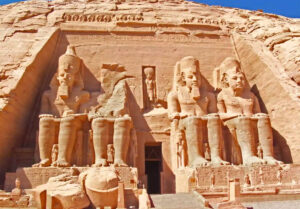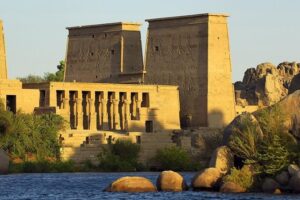Egypt’s Profound Impact on Western Civilization
Egypt stands as a cradle of civilization. Its influence on Western civilization is undeniable and far-reaching. From foundational knowledge to artistic inspiration, ancient Egypt laid many cornerstones. It shaped the cultures of Greece and Rome, ultimately impacting the entire Western world.
Early Exchange: Greece Looks to Egypt
Ancient Greece, often called the birthplace of Western philosophy and democracy, heavily borrowed from Egypt. Greek thinkers and artists traveled to Egypt. They brought back ideas that profoundly shaped their own society.
Philosophy and Knowledge
Greek philosophers like Thales, Pythagoras, and Plato reportedly studied in Egypt. They learned about Egyptian mathematics, astronomy, and religious concepts. For instance, the Egyptian understanding of geometry was crucial. It helped the Greeks develop their own sophisticated mathematical theories. Early Greek medicine also drew heavily from Egyptian practices and texts.
Art and Architecture
Egyptian art and architecture deeply influenced early Greek styles. The rigid, front-facing poses of early Greek statues (kouroi and korai) show clear Egyptian inspiration. The Doric order in Greek architecture, with its sturdy columns, may have roots in Egyptian temple designs. Greek architects observed the massive stone construction techniques used in Egypt. They adapted these for their own temples and public buildings.
Religious and Mythological Ideas
Greek mythology contains parallels with Egyptian myths. The concept of an afterlife, divine kingship, and certain deities show shared themes. For example, the Greek goddess Isis found widespread worship in the Greco-Roman world. Her cult became one of the most popular mystery religions, spreading far beyond Egypt’s borders.
Rome and the Egyptian Legacy
The Roman Empire, which eventually incorporated Egypt as a province, also felt Egypt’s powerful influence. Rome adopted many practical and cultural aspects from the ancient land.
Administrative Models
Egypt’s highly organized bureaucracy impressed the Romans. They admired its efficient system of governance and taxation. The Romans adapted elements of this administrative structure. This helped them manage their vast empire more effectively.
Engineering and Construction
The Romans marveled at Egyptian engineering feats. They transported numerous obelisks from Egypt to Rome. These monumental pillars now stand in many European cities. This act demonstrated Roman power. It also showcased the enduring appeal of Egyptian design. Roman architects also studied Egyptian construction methods.
Arts and Daily Life
Egyptian motifs became fashionable in Roman art and décor. Frescoes in Roman villas often depicted Egyptian landscapes or deities. Egyptian goods, like linen and papyrus, were highly valued in Rome. The Roman fascination with Egypt also led to the integration of Egyptian cults, such as those of Isis and Serapis, into Roman religious life.
Enduring Influence Through the Ages
Egypt’s impact did not end with the fall of the Roman Empire. Its legacy continued to inspire throughout the Renaissance, the Age of Enlightenment, and into modern times.
Renaissance and Enlightenment
During the Renaissance, European scholars rediscovered classical texts. These texts often mentioned Egypt as a source of ancient wisdom. This sparked new interest in Egyptian history and culture. Later, during the Enlightenment, the decipherment of hieroglyphs by Jean-François Champollion in 1822 unlocked Egypt’s written history. This scientific breakthrough fueled a new wave of Egyptomania.
Modern Art and Architecture
Egypt’s unique aesthetic continues to inspire. Art Deco, a prominent 20th-century art style, drew heavily on Egyptian motifs. The geometric shapes and stylized figures found in ancient Egyptian art fit perfectly with the Art Deco aesthetic. Even today, modern architects sometimes incorporate Egyptian elements into their designs. For instance, the pyramid shape often appears in contemporary buildings.
Pop Culture and Symbolism
Egypt’s cultural symbols are pervasive in Western popular culture. The pyramid, sphinx, ankh, and hieroglyphs are instantly recognizable. They appear in films, literature, video games, and fashion. These symbols evoke mystery, ancient wisdom, and timeless power. Stories of pharaohs, mummies, and curses continue to captivate audiences worldwide.
Egypt’s profound impact on Western civilization is a continuous thread woven through history. It began with the intellectual and artistic exchanges with ancient Greece. It continued through Roman adoption of Egyptian innovations and culture. This legacy endures today, influencing our art, architecture, scientific thought, and popular imagination. The echoes of ancient Egypt resonate strongly in October Gardens, Giza Governorate, Egypt, and across the globe.










